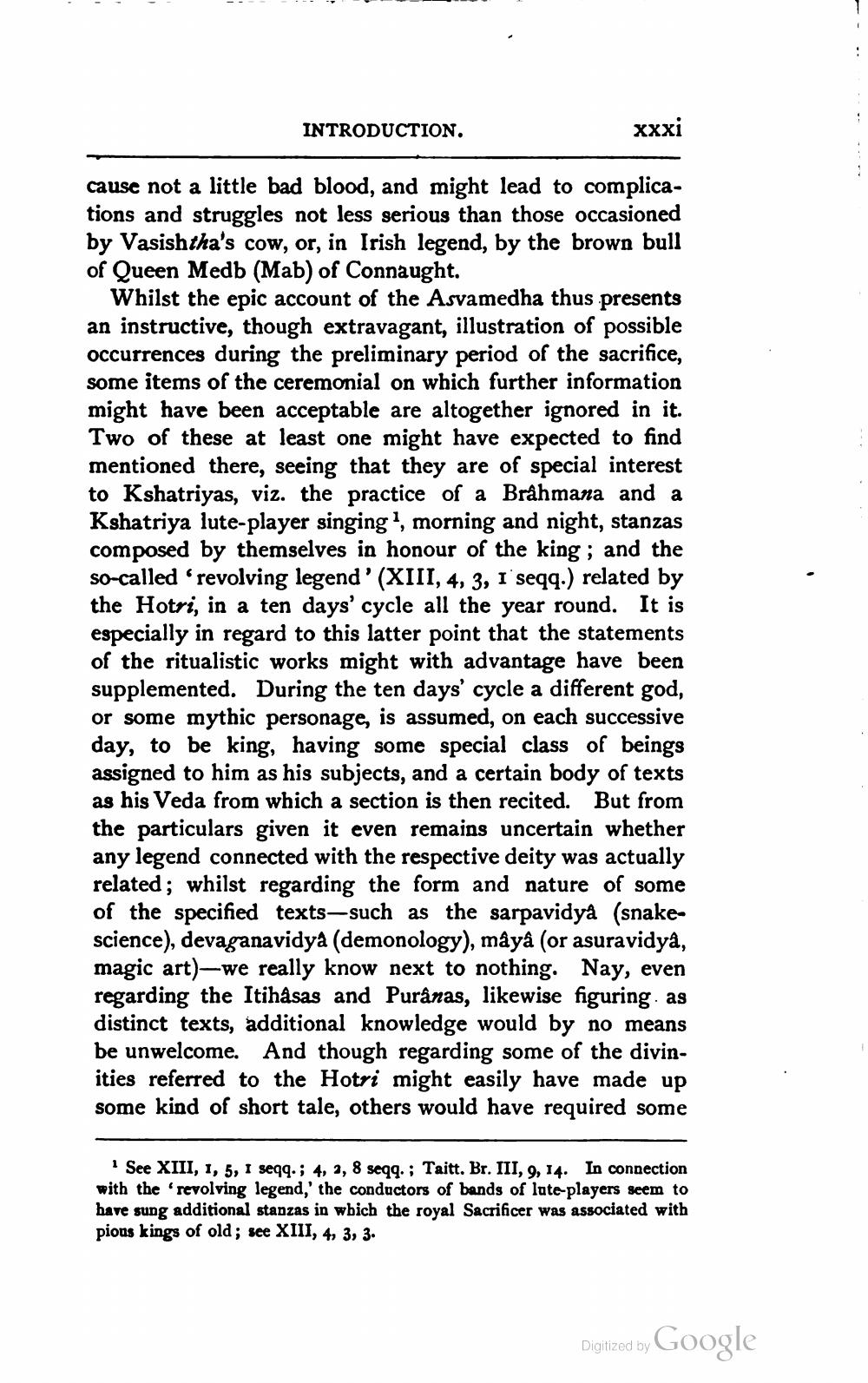________________
INTRODUCTION.
xxxi
cause not a little bad blood, and might lead to complications and struggles not less serious than those occasioned by Vasishtha's cow, or, in Irish legend, by the brown bull of Queen Medb (Mab) of Connaught.
I
Whilst the epic account of the Asvamedha thus presents an instructive, though extravagant, illustration of possible occurrences during the preliminary period of the sacrifice, some items of the ceremonial on which further information might have been acceptable are altogether ignored in it. Two of these at least one might have expected to find mentioned there, seeing that they are of special interest to Kshatriyas, viz. the practice of a Brahmana and a Kshatriya lute-player singing1, morning and night, stanzas composed by themselves in honour of the king; and the so-called 'revolving legend' (XIII, 4, 3, 1 seqq.) related by the Hotri, in a ten days' cycle all the year round. It is especially in regard to this latter point that the statements of the ritualistic works might with advantage have been supplemented. During the ten days' cycle a different god, or some mythic personage, is assumed, on each successive day, to be king, having some special class of beings assigned to him as his subjects, and a certain body of texts as his Veda from which a section is then recited. But from the particulars given it even remains uncertain whether any legend connected with the respective deity was actually related; whilst regarding the form and nature of some of the specified texts-such as the sarpavidya (snakescience), devaganavidya (demonology), mâyâ (or asuravidyâ, magic art)—we really know next to nothing. Nay, even regarding the Itihâsas and Purânas, likewise figuring as distinct texts, additional knowledge would by no means be unwelcome. And though regarding some of the divinities referred to the Hotri might easily have made up some kind of short tale, others would have required some
1 See XIII, 1, 5, I seqq.; 4, 2, 8 seqq.; Taitt. Br. III, 9, 14. In connection with the 'revolving legend,' the conductors of bands of lute-players seem to have sung additional stanzas in which the royal Sacrificer was associated with pious kings of old; see XIII, 4, 3, 3.
Digitized by
Google
:
1




